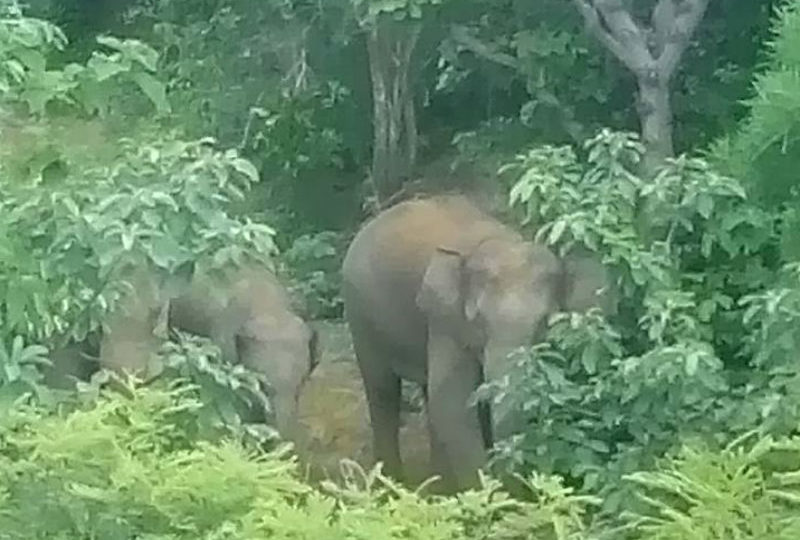The residents of several villages in Ayeyawady Region petitioned a local government minister this week to help end the terror and devastation wrought by eight elephants that have been occupying their farms for over a month.
On October 16, six wild elephants entered the cluster of villages, located near the Nankathu Dam in Ingapu Township, and started tearing down homes and devouring fields of paddy. The villagers called the local Forestry Department, which brought in two trained elephants to scare off the wild ones.
However, rather than driving off the attackers, the two trained elephants rebelled against their human masters, attacked their keeper, and joined in the destruction. The villagers then tried to scare them off by lighting bamboo bonfires, but the elephants keep coming back, mostly at night.
“It’s been over 50 days. We have already suffered the loss of our paddy plantations, and we are afraid of them,” Thetyetoak village resident Win Tin told Eleven.
The Forestry Department has since called off all attempts to dislodge the eight elephants, which have destroyed over 100 acres of paddy and seven homes.
“We had never seen wild elephants come into our region before this,” said Kanyutkwin villager Phoe Khwei. “It was impossible to see elephants outside the village. But now, wild elephants have arrived in our village and they ate our paddy plantations.”
The destruction of farmland poses a serious problem for the villagers, many of whom purchased seeds using loans from agricultural banks. Some villagers have had to move elsewhere to seek other work.
On Wednesday, a group of residents from Kanyutkwin village petitioned Ayeyawady Region’s agriculture minister Ba Hein for help in removing the elephants. The minister said he would seek a solution to the conflict. He is scheduled to visit the village today.
Human-elephant conflict is growing increasingly common in Ayeyawady Region, which has a large elephant population suffering from rapid habitat loss due to human encroachment and deforestation. Elephants often wander into human settlements in search of food, and conflict breaks out when human try to repel them.
Between 2010 and 2016, an estimated 35 humans and 95 wild elephants have died in encounters with one another.
In July 2016, wildlife conservation groups and Myanmar’s Ministry of Natural Resources and Environmental Conservation organized a workshop to assess the human-elephant conflict section of the Myanmar Elephant Conservation Action Plan. Experts recommended tighter deforestation and land use regulations to minimize encounters between humans and elephants.
They also called for campaigns in areas where elephants live to educate humans on how to react to elephant encounters in a way that does not lead to violence.
Myanmar is estimated to be home to between 2,000 and 4,000 wild elephants. The Ministry of Natural Resources and Environmental Conservation has estimated that an average of one elephant is killed in the country every week.





Reader Interactions